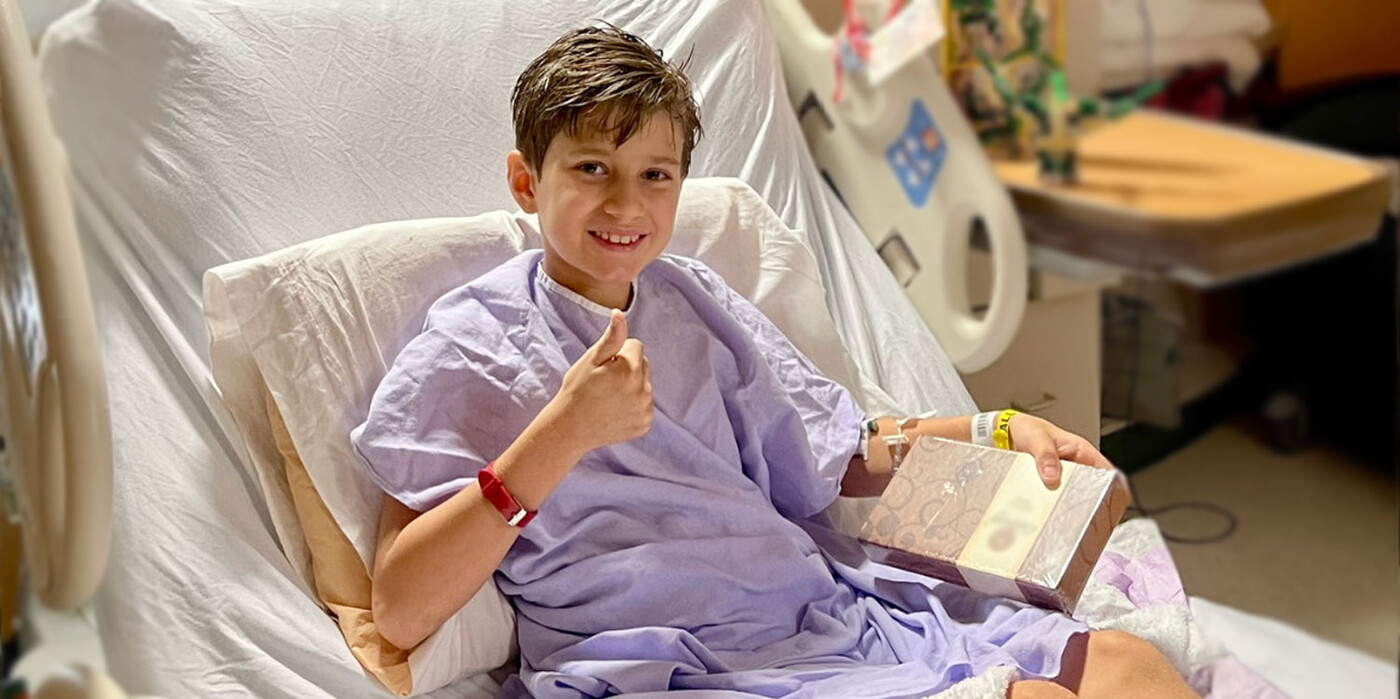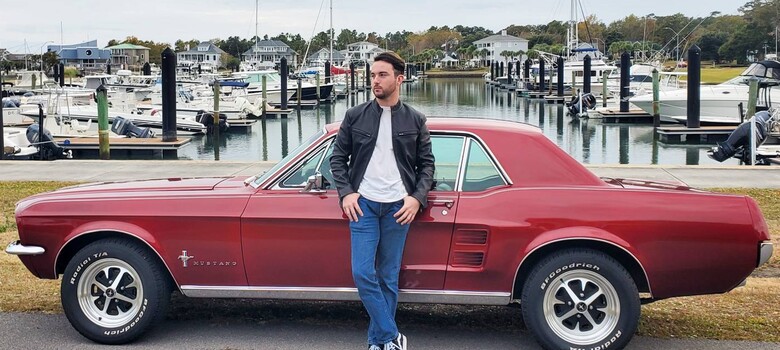Boy Is Seizure-Free after Complex Epilepsy Surgery

Nathaniel Clauss smiles during a hospital stay at Duke.
Nathaniel Clauss was diagnosed with epilepsy at age eight, after a seizure caused him to fall at his school in Washington, D.C. Despite starting multiple medications, Nathaniel’s seizures rapidly worsened. Nathaniel’s parents brought their son to Duke, where neurosurgeons removed the cells in his brain where his seizures originated. Now 10 years old, Nathaniel hasn’t had a seizure since his surgery in January 2022, and he and his parents say they are forever grateful.
Surgery Could Cure Epilepsy Seizures
Nathaniel was diagnosed with epilepsy in November 2021. Less than two weeks later, he was hospitalized due to continued, uncontrolled seizures during a visit to South Carolina. Local doctors discovered that a collection of abnormal cells in the brain called focal cortical dysplasia was the cause, which is why additional anti-seizure medications weren’t helping.
Nathaniel’s parents found research showing that surgically removing the dysplasia in his brain could completely stop the seizures. But because Nathaniel’s dysplasia appeared to be close to a vital area of his brain that controls movement, called the motor cortex, surgery could be risky. “That’s when we decided that we needed to elevate his care,” said Jackie Clauss, Nathaniel’s mom.
Transfer to Duke for Expert Epilepsy Care
Nathaniel’s parents decided to transfer their child's care to Duke. As a Level 4 Epilepsy Center, Duke offers the highest level of comprehensive epilepsy diagnosis and treatment options. They met with Dr. Muhammad Zafar, MD, a pediatric neurologist and epileptologist who specializes in caring for children with seizure disorders. At that point, Nathaniel was having up to 50 seizures a day, so the first step was getting his seizures under control.
Once his seizures were controlled, Dr. Zafar and his colleagues used an advanced technique that combines EEG and MRI data to precisely locate the origin of Nathaniel’s seizures (called the seizure focus). Then doctors used robotic stereotactic assistance to surgically place pencil-like electrodes inside Nathaniel’s brain. This minimally invasive technology can pinpoint the seizure focus down to the millimeter.
Duke Correctly Diagnoses Epilepsy Origin
Test results showed that Nathaniel’s seizures were not coming from the motor cortex, as his previous doctors believed. Instead, they were originating in a nearby area of the brain called the supplemental motor area.
“It’s a part of the brain that neurosurgeons get nervous about because it also controls movement, but not in the same way that the motor cortex does,” said pediatric neurosurgeon Matthew Vestal, MD. Operating in the supplemental motor area can cause weakness and paralysis, but when the procedure is performed correctly, these effects are only temporary. “They’re going to get that function back, but it could take days, or weeks, or months,” he said.
Epilepsy Surgery Leads to Seizure Freedom
Nathaniel underwent the five-hour brain surgery in January 2022. As expected, he was unable to speak or move the right side of his body when he woke up. But Nathaniel was talking and walking on his own within a week. Ten days after his surgery, he was released to go home to Washington, D.C., where he completed physical, occupational, and speech therapy.
Today, Nathaniel is off all his anti-seizure medications and hasn’t had a single seizure since his surgery last year. He’s returned to school and is back to activities like piano and violin lessons, playing tennis, fishing, and riding his BMX bike.
“It is such a relief because we were always so scared about what could happen to him if he had a seizure and got hurt,” Jackie Clauss said. “He’s back to just playing as a child. He is fearless. Seizure freedom has given him his life back.”
When to Consider Epilepsy Surgery
Dr. Vestal said he understands that people who are eligible for epilepsy surgery may be hesitant because it sounds scary. “But adding another epilepsy medication after you've tried two of them offers very little chance of any meaningful success,” he said. “With surgery, the light at the end of the tunnel is seizure freedom. That is what the Clauss family signed up for, and I’m thrilled that is what we were able to deliver.”




